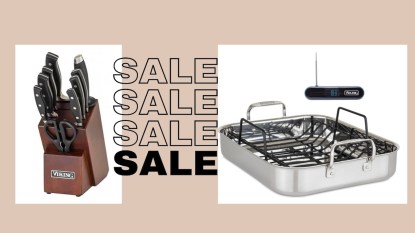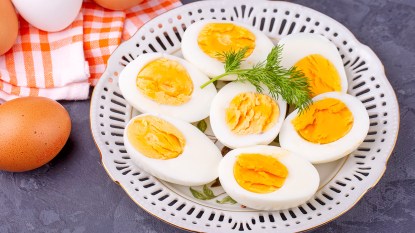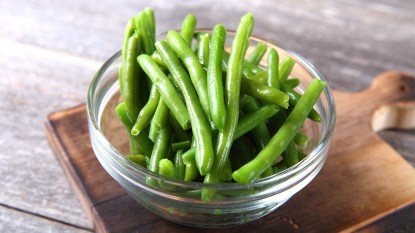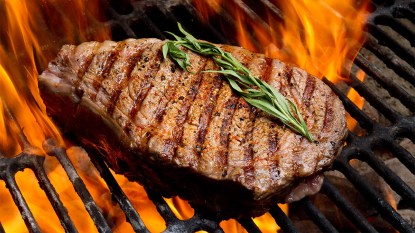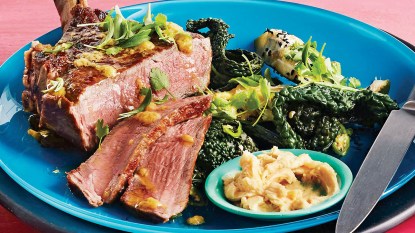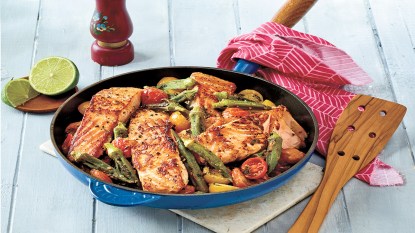Still Using a Cast-Iron Pan? Here’s Why You Should Replace It With a Carbon Steel Skillet
It's lightweight and easy to clean!
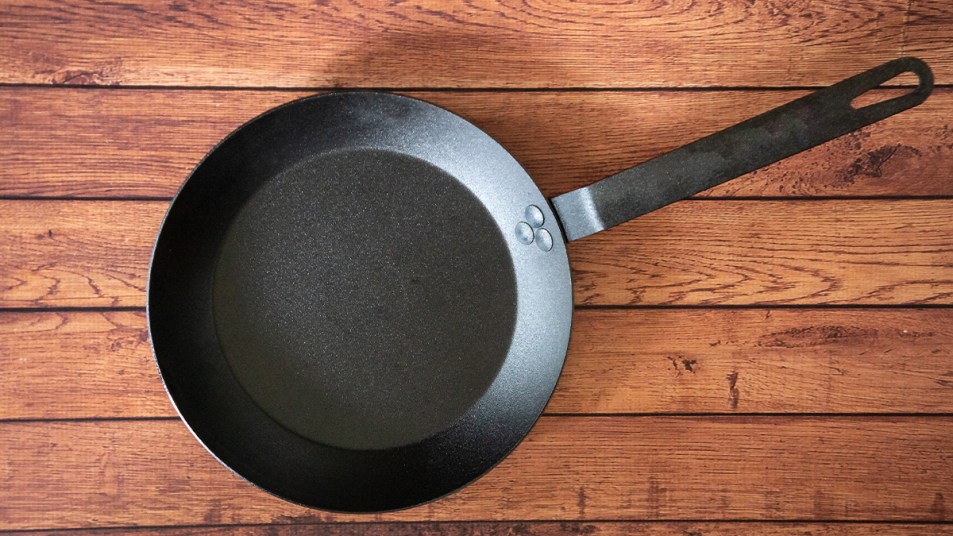
Our favorite pots and pans can last for years when they’re well taken care of. This is especially true for a carbon steel skillet, which is similar to cast-iron but has one major difference that makes it a bit more hassle-free: It’s lightweight design makes it perfect for cooking everyday meals and cleaning it is a breeze.
Here’s why a carbon steel skillet is missing from your kitchen — and how to season it properly to start using for all your favorite dishes.
The Difference Between Carbon Steel and Cast-Iron
The main difference between a carbon steel and cast-iron skillet is the weight. As most of us know, cast-iron is a very heavy-duty material. It’s perfect for evenly distributing heat while cooking a pot roast or frying up some bacon — but lugging it around the kitchen requires two hands and some impressive upper body strength.
Carbon steel, while also super sturdy, is a much lighter and thinner material than cast-iron. This makes it easier to carry, like when you need to take it from the stove to the oven (or vice versa). And like a cast iron, carbon steel will also retain heat for cooking dishes more evenly.
Carbon steel also has a slightly smoother surface that’s similar to a traditional non-stick pan. This means that your food won’t end up sticking to the pan when you’re ready to clean it and you don’t have to soak overnight to remove the stuck-on bits.
Basically, you’re getting all of the durability and versatility of a cast-iron, but without some of the hassles. Once you season it, it’s perfect for cooking omelettes in the morning, searing meat, and sautéing vegetables!
How to Season a Carbon Steel Skillet
Similar to cast-iron (or any good quality pan), you’ll need to season it first. Most carbon steel skillets, like Merten & Storck Carbon Steel 8-inch Black Frying Pan (Buy on Amazon, $19.99), will come pre-seasoned, but it’s great to also do it yourself to create an extra layer of non-stick coating and protect the carbon steel material. It’ll also boost the flavor of the first dishes you cook in it. Think of it as “breaking in your new pan,” like you might do with a pair of shoes.
Made In Cookware has an easy technique for seasoning your carbon steel skillet in the oven. First, make sure that you wash it really well with soap and water. Then dry off the pan and apply a very thin coat of oil in the inside of it (go for one that can handle high heat, like vegetable or olive oil). There shouldn’t be any leftover oil that collects in the bottom of the pan.
Place it on medium-high heat until the pan starts getting hot. Then flip the pan upside down and place in a 400 degree oven for up to an hour — once the oil looks baked into the carbon steel surface you can remove it with oven mitts. The pan might smoke a little bit, but that’s just from the oil and heat from the oven.
And voila! The pan is seasoned and ready to cook with. You can see all of the seasoning magic in Made In Cookware’s video below.
Want a slightly quicker way of seasoning your pan? Try an even easier method recommended by Cook’s Illustrated: Wash it first with soap and water and then fry 1⁄3 cup oil, 2⁄3 cup salt, and the peels from two potatoes in a carbon steel skillet for 8 to 10 minutes on medium heat, until they’re crispy and golden brown. (Feel free to nibble on the skins when you’re done!)
Afterwards, you can wash the pan again to get rid of any remnants from the salty-potato peel mixture, then coat it with 1/4 teaspoon oil, and it’s all set it go. This hack works great if you don’t want to risk setting off your fire alarm with a slightly oily pan sitting in your oven!
A carbon steel skillet would be a great addition to any kitchen — and might even replace your go-to cast iron!


